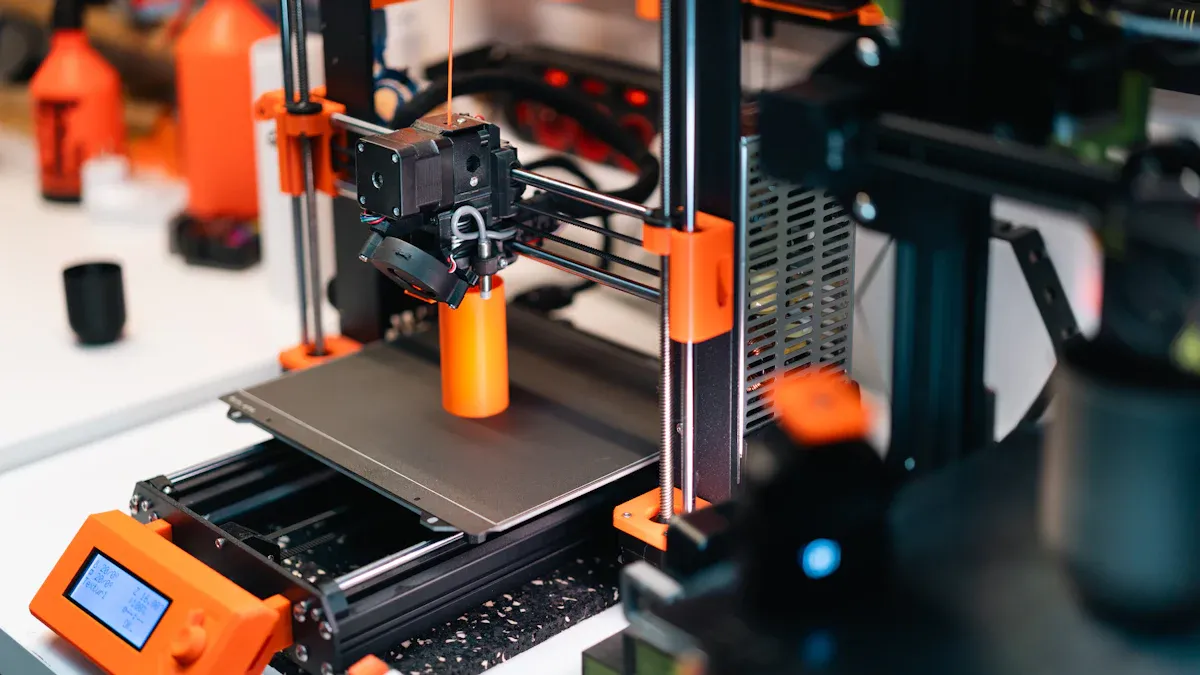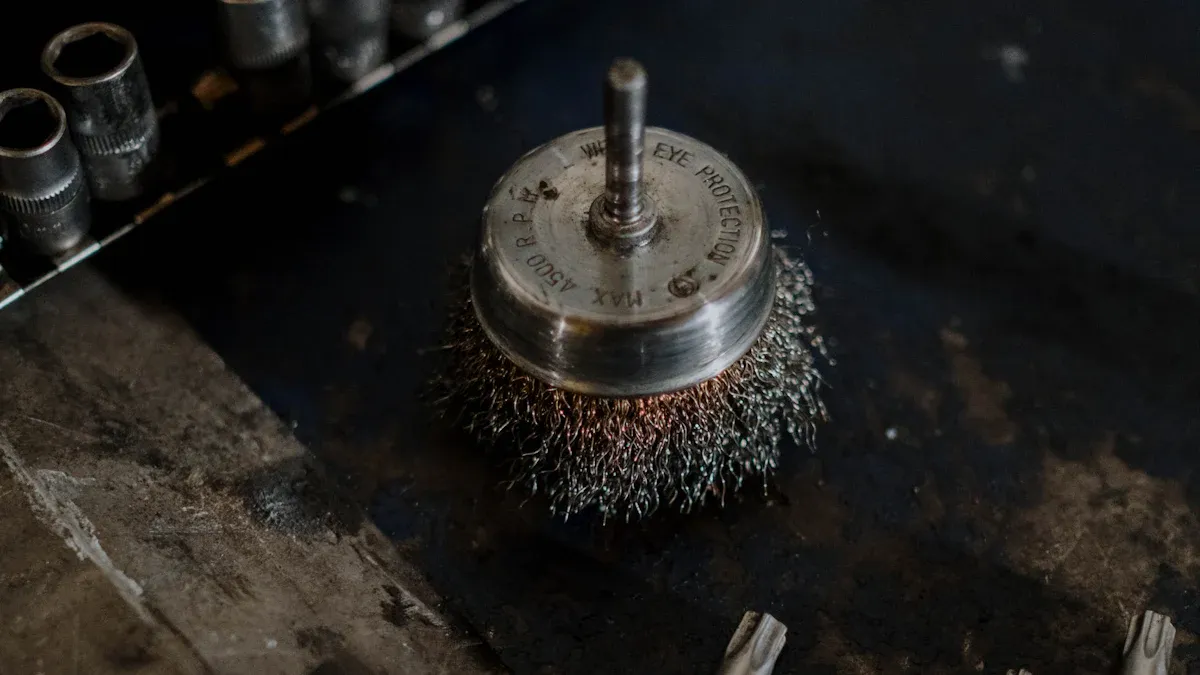
The Single Screw Barrel For Blowing Moulding plays a critical role in shaping plastic products. Operators rely on the Single Plastic Screw Barrel to melt and mix raw materials. An Extruder Parallel Screw Barrel ensures steady movement of the plastic melt. The Plastic Extruder Machine Barrel helps maintain pressure and flow during production.
Single Screw Barrel For Blowing Moulding: Core Functions

Melting and Mixing Plastic Material
The Single Screw Barrel For Blowing Moulding begins its work by heating and blending raw plastic pellets. As the screw rotates inside the barrel, friction and external heaters raise the temperature of the plastic. This process transforms solid pellets into a smooth, molten mass. Operators must control the temperature carefully to avoid overheating or under-melting the material.
Tip: Maintaining the right temperature ensures the plastic melts evenly and mixes well, which helps prevent defects in the final product.
The following table shows the optimal temperature ranges for melting and mixing polycarbonate in blow molding machines:
| Temperature Parameter | Range (°F) | Range (°C) | Effect on Blow Molding Process and Part Quality |
|---|---|---|---|
| Mold Temperature (Typical Recommended) | 170-190 | 77-88 | Standard range for processing polycarbonate; baseline for quality |
| Mold Temperature (Improved Quality) | 210-230 | 99-110 | Reduces stress cracking, improves part durability, eliminates need for annealing |
| Melt Temperature (Initial) | 610 | 321 | High melt temperature ensuring flow, but may increase heat removal needs |
| Melt Temperature (Optimized) | 500 | 260 | Lower melt temperature reduces heat removal, maintains transparency and flow |
By keeping mold temperatures between 210-230°F (99-110°C) and melt temperatures around 500-610°F (260-321°C), the Single Screw Barrel For Blowing Moulding achieves optimal melting and mixing. This careful control improves part quality and reduces problems like stress cracking.
Conveying and Pressurizing the Melt
Once the plastic melts, the screw pushes the molten material forward through the barrel. The screw’s design, including its diameter, pitch, and channel depth, determines how efficiently it moves and pressurizes the melt. As the screw rotates, it acts like a pump, building up pressure to force the plastic through the die and into the mold.
Researchers have measured how screw speed and geometry affect flow rate and pressure. For example, pressure sensors placed along the barrel show that as screw speed increases, both flow rate and pressure rise. Stable operation depends on keeping these factors within the right range. If the pressure drops or surges, the machine may produce parts with uneven thickness or other defects.
Operators can adjust screw speed and temperature to maintain steady conveying and pressurizing. In one study, a two-stage extruder ran for 400 minutes with stable pressure and flow. When the screw speed changed, the flow rate and pressure also changed, showing how important it is to control these settings. The Single Screw Barrel For Blowing Moulding must maintain the right pressure to ensure the plastic fills the mold completely and forms strong, uniform products.
Ensuring Consistent Material Flow
Consistent material flow is essential for producing high-quality blow molded parts. The Single Screw Barrel For Blowing Moulding must deliver a steady stream of molten plastic at the correct temperature and pressure. If the flow varies, the machine may create parts with defects such as uneven walls or weak spots.
Empirical data shows that the depth ratio between the screw’s feed and metering flights plays a key role in solids conveying efficiency. Adjusting these depths helps the screw handle different types of plastic and maintain a uniform melt. The angle of the compression section also affects how well the screw melts and mixes the material. Too steep an angle can cause blockages, while too gentle an angle may lead to poor melt quality.
Statistical studies confirm that keeping material flow steady reduces production defects. When operators use advanced controls and adjust material feeders properly, the process-capability factor (Cpk value) increases. Higher Cpk values mean the machine produces parts with more consistent dimensions and fewer defects.
Note: Monitoring temperature and pressure sensors, along with careful screw speed control, helps operators maintain uniform melt flow and thermal stability.
The Single Screw Barrel For Blowing Moulding, when operated and maintained correctly, ensures that every part meets quality standards and reduces waste in the production process.
Operation and Maintenance for Optimal Performance
Temperature Control and Process Stability
Precise temperature control ensures stable operation in blow molding machines. Operators monitor parison and mold temperatures to maintain shape, surface finish, and seam strength. High parison temperatures can cause deformation and uneven walls. Low temperatures may increase stress and reduce product strength. Melt and die temperature control has the greatest effect on film thickness and process stability. Operators use sensors and controls to keep temperatures within target ranges. This approach prevents melt degradation and supports consistent product quality.
Maintaining stable temperatures throughout the process helps avoid defects and improves throughput.
Maintenance Practices and Longevity
Routine maintenance extends the life of the Single Screw Barrel For Blowing Moulding. Preventive maintenance programs track wear and reduce downtime, scrap rates, and energy use. Operators schedule maintenance based on resin type and machine usage. For reinforced resins, checks occur every six months. For unfilled resins, annual checks are common until wear patterns are clear. Cleaning with commercial purging compounds improves efficiency and protects the screw and barrel. Predictive systems use sensors to measure wear, allowing planned repairs and reducing unexpected failures.
| Maintenance Frequency | Key Activities | Performance/Benefit |
|---|---|---|
| Daily | Visual inspection, oil filter check, safety system inspection | Early problem detection, maintains uptime |
| Weekly | Hose and cylinder inspection, air filter cleaning | Prevents leaks, ensures smooth operation |
| Quarterly | Thorough inspections and preventive actions | Sustains performance, extends component longevity |
Impact on Product Quality
The condition of the screw and barrel directly affects product quality. As wear increases, the output rate per screw speed drops. Discharge temperature rises, making it harder to control melt temperature. Operators may adjust screw speed to maintain output, but excessive wear eventually leads to performance loss. Measuring flight clearance helps detect wear early. Consistent maintenance and monitoring ensure the Single Screw Barrel For Blowing Moulding delivers stable throughput and high-quality parts.
Regular checks and timely interventions help maintain product standards and reduce waste.
The Single Screw Barrel For Blowing Moulding remains essential for efficient plastic processing and reliable machine performance. Operators see clear benefits:
- Defect rates drop by up to 90% with optimized screw barrel features.
- Improved melt quality and film uniformity boost product consistency.
- Enhanced durability and reduced waste support higher production efficiency.
FAQ
What is the main function of a single screw barrel in blow molding machines?
The single screw barrel melts, mixes, and conveys plastic material. It ensures steady flow and pressure for forming high-quality hollow products.
How often should operators perform maintenance on the screw barrel?
Operators should inspect the screw barrel daily. They should schedule thorough maintenance quarterly to ensure optimal performance and extend equipment life.
Why does temperature control matter in blow molding?
Precise temperature control prevents defects. It maintains melt quality and ensures consistent product dimensions throughout the blow molding process.
Post time: Jun-18-2025
